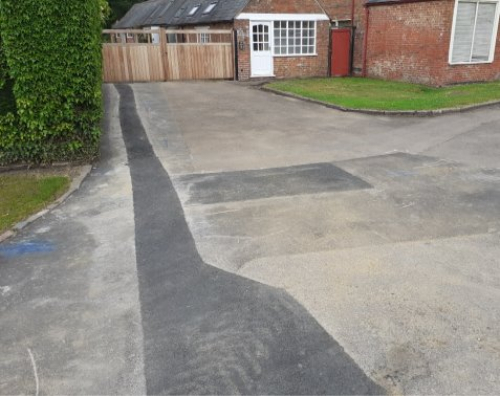Bitteswell Conservation Area
10. Management Plan
10.1 Local planning authorities have a duty placed on them under Section 71 of the Planning (Listed Buildings and Conservation Areas) Act 1990 to draw up and publish proposals for the preservation and enhancement of conservation areas. Conservation area appraisals help to identify threats to the character of the conservation area and opportunities for enhancement. Potential threats to the character and appearance of the conservation area arise from the loss of traditional features of value. Such threats can range from the loss of historic fabric to unsympathetic public realm and the impact of highway works.
10.2 The character and appearance of both the conservation area and of individual buildings and structures are at risk from the loss of historic fabric and traditional features. Regular ongoing maintenance limits deterioration to buildings of any age or materials. Efforts should be made to repair or replace historic fabric with appropriate materials. Generally, UPVC is not an appropriate replacement for historic timber windows and doors. It is difficult to achieve the necessary standards in design and the use of UPVC can lead to environmental problems due to reduced breathability in materials. More information of materials for historic building repairs can be found on the Historic England website https://historicengland.org.uk/advice/technical-advice/buildings/building-materials-for-historic-buildings/
10.3 The treatment of the public realm impacts on the character and appearance of a conservation area. The loss of features of value or the introduction of unsympathetic street furniture poses a threat to the character and appearance of a conservation area. Bitteswell Conservation Area generally has an uncluttered public realm with features such as the finger post, the K6 telephone kiosk and the historic post boxes making a positive contribution to the conservation area. These features should be maintained and retained wherever possible. Applications for development should ensure that any alterations to the public realm preserve or enhance the character and appearance of the conservation area.
10.4 The character and appearance of a conservation area can also be threatened by unsympathetic highway works and by traffic and car parking. The pavements and pathways are generally neutral in colour and character. The example below shows that even differing shades of tarmac used after works can impact negatively on the conservation area.

Image showing the negative impact of differing shades of tarmac.
10.5 Site visits to Bitteswell in 2021/22 indicated that the demand for parking is high at points in the day and in the evening when people return from work. Parents on the school run tend to make use of the parking facilities at the two local pubs for those short periods in the day. However, this is not an option at evenings and weekends when patrons need to use the car parks.
10.6 The roads within Bitteswell conservation area are often lined with hedgerows and verges. Works to highways and footways risk the loss of historic traditional materials such as kerbstones, setts and paviours or the introduction of modern surfacing and boundary treatments and signage, all of which pose a threat to the character and appearance of the conservation area. Loss of such historic fabric should be discouraged. The Highways Authority should, as far as possible, seek to ensure that works to highways and footways makes good any historic surfaces and that completed work does not detract from the character and appearance of the conservation area.
10.7 Any proposals for new development should consider the impact of alterations to highways and footways. With the existing high demand for on-street parking careful consideration should be given to the effect of increased traffic and parking provision on the character and appearance of the Bitteswell conservation area.
10.8 As a result of the historical development of the settlement there is a diverse mix of buildings and building materials with no common architectural theme. However, boundary treatments of hedges and red brick garden walls (often with blue brick or ceramic copings) are a feature of the conservation area. Any proposals for development should consider the impact on these existing features and how such features can be incorporated in order to preserve and enhance the rural character of the conservation area.
(1) 1. Do you have any additional architectural or historical information that could support the Bitteswell Conservation Area Appraisal?
(1) 2. Do you think the document identifies the special architectural and historic interest of the Bitteswell Conservation Area?
(5) 3. Do you have any further comments?